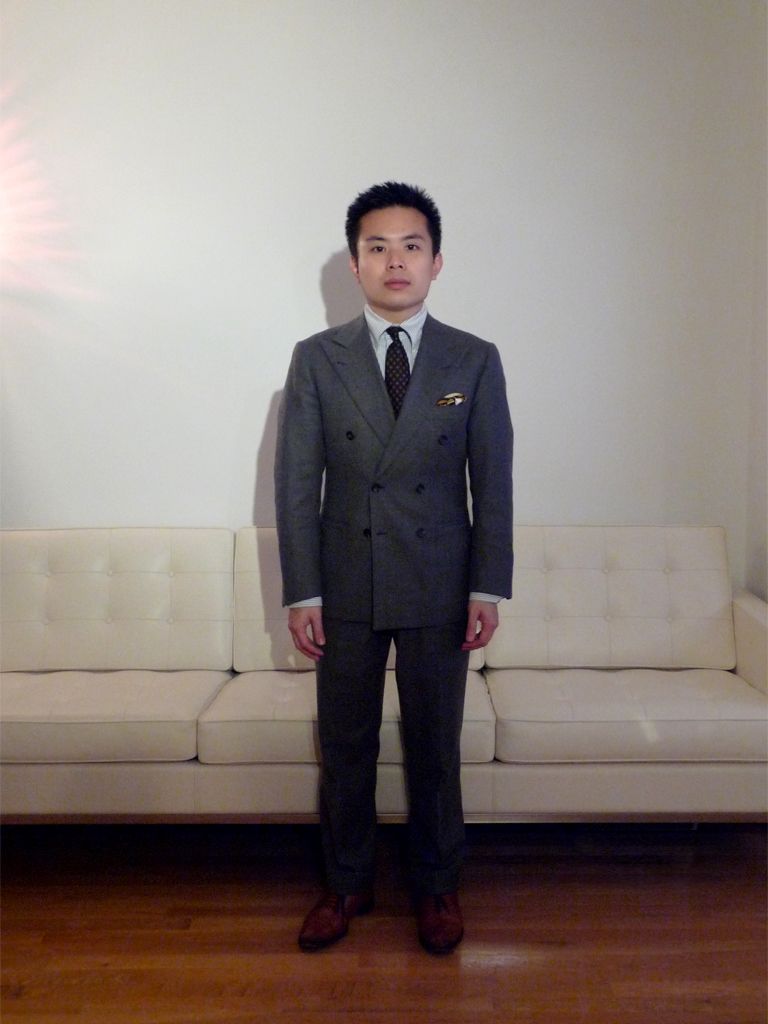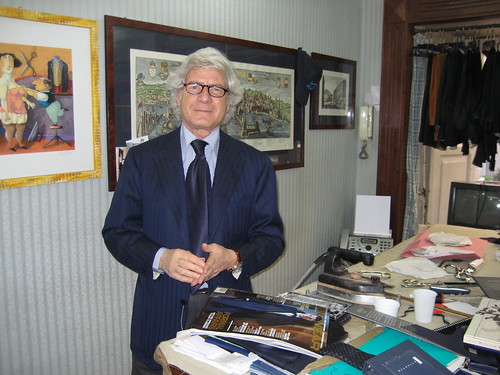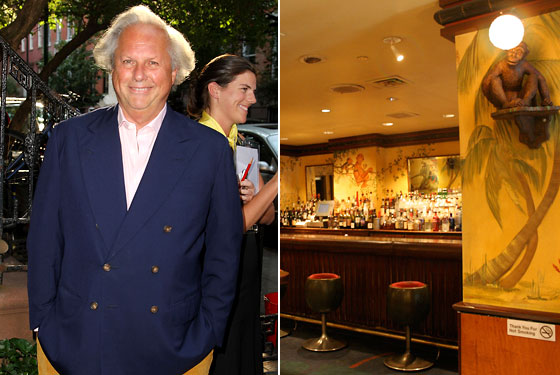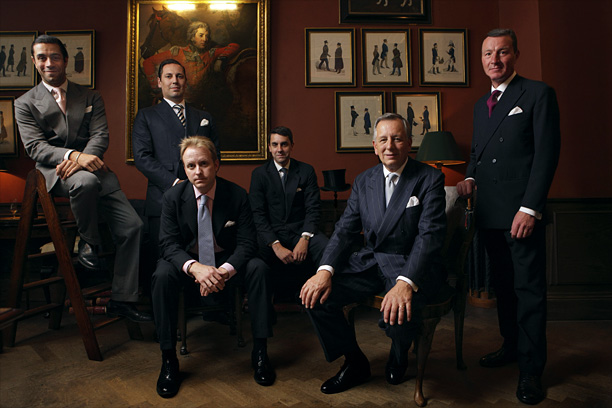mafoofan wrote:Uppercase, would the cut of many non-Rubinacci Neapolitan tailors be considered 'drape' in either of the senses above? I was under the impression that, though they are typically soft garments, they tend to be relatively lean-fitting.
I don't feel out of place wearing my suits and jackets to work, although they have drape and law is a conservative field. I suppose I might feel different if most other lawyers were in suits most of the time, but that's not the case.
There are as many types of Neapolitan shoulder treatments as there are tailors and they incorporate drape to varying degrees.
I think that any well made coat needs ‘drape’ otherwise it would just be a straight jacket.
Drape done well, in my view, is barely noticeable with the extra cloth in the chest and shoulder blades carefully added and then harmoniously fitted by the tailor to the client’s physique, it whispers rather than shouts…
…as opposed to a tailor simply building an overly large coat with big shoulder and artlessly, without regard to proportion or line, hanging the cloth from those large shoulders and calling that drape.
Ofcourse, everyone has their own idea as to attractiveness of various shoulder treatments, amount of drape, degree of softness, what looks good on them, what works, what doesn’t. Tastes differ!
I personally like a bit of a built up shoulder in a suit, rather than rounded, along with a bit more structure throughout the coat. Somewhere between Neapolitan slouch and London starch.
But obviously, there are many good examples of the Drape/ softer shoulder treatment looking good in a suit, among them your DB below, mafoofan.
Though I think, for example, that the shoulder of your DB from Rubinacci /Naples does not appear as round and ironed flat, nor the chest as puffed up, as what Rubinacci/Milan made for me. You be the judge from the photos.
Your shoulder , mafoofan, appears built up a bit , or supported, in the photos and also with a touch of rollino. I prefer this treatment which was made for you in Naples which I think looks altogether right for a suit.
Iammatt’s suits’ shoulders similarly appear a touch built up/ supported, rather than round.
I wonder, mafoofan: is your Rubinacci DB shoulder/chest different to your sports coats’ shoulder?
Here's a compilation of some photos of Neapolitan shoulders done for clients with varying degrees of drape and shoulder treatments. Spalla scesa, spalla convessa, spalla insellata, spalla camicia…there are many shoulder treatments in Naples and the diversity is wonderful.
For good measure, I’ve added a photo of drape from another school of tailoring: Caraceni’s/Rome treatment of the sports coat from this master of the minimalist, lean suit.
It’s interesting to compare the healthy amount of drape in the Caraceni glen check sports coat to the bare whisper of drape in blue coat which is more along the lines of Caraceni’s silhouette for a suit coat. But sport coat and suit coat do differ.
Finally, we end with the dead Neapolitan dog lying amid the splendor of Naples past.


















































